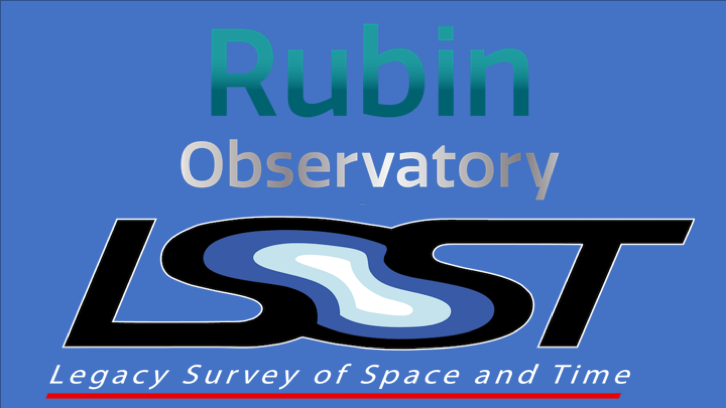Scientific Objectives
Active galactic nuclei (AGNs) include a broad variety of sources that share the common property of emitting persistent huge luminosities from a very compact region (~1 pc). Their power is thought to come from accretion of matter onto a supermassive black hole (106-1010solar masses).
Some AGNs are very powerful radio sources, with twin jets of plasma extending up to Mpc distances from the central engine. When one of the jets is oriented close to the line of sight, its emission is amplified by relativistic effects and these beamed sources are called “blazars”. Therefore, blazars (including flat spectrum radio quasars, FSRQs, and BL Lac objects, BL Lacs) are the most suitable objects to investigate the physics of extragalactic jets. They emit at all wavelengths, from the radio to the gamma-ray band, and their flux is variable on all the observable time scales, from minutes to years. Their radiation is polarized and both the polarization degree and angle are variable too. Indeed the low- energy radiation, from radio to UV or X-rays, is well explained as synchrotron radiation produced by relativistic electrons in the magnitized jet, while the origin of the high-energy radiation is still debated. According to leptonic models, it is produced by inverse-Compton scattering of soft photons from the same relativistic electrons, where the origin of the soft photons is another debated issue. They can either be the same synchrotron photons (synchrotron-self-Compton, or SSC, models) or come from outside the jet (external Compton, or EC, models), e.g. from a region of fast-moving gas clouds surrounding the accretion disc (the broad line region) or from a more external dusty torus (e.g. Sikora et al. 2009, ApJ, 704, 38). Researchers have long been discussing about the location of the jet emitting zone(s) and therefore on the most plausible nature of the seed photons, and different scenarios have been proposed to explain the different behaviours observed even in the same source at various epochs. Alternatively, hadronic models can explain the high-energy emission as due to synchrotron radiation produced by protons and muons and to particle cascades (e.g. Boettcher et al. 2013, ApJ, 768, 54). They also predict the production of neutrinos. In this respect, the recent detection by IceCube of ultra- high-energy neutrinos that can possibly be associated with blazars opens an exciting new observing window on these sources.
Padovani & Resconi (2014) and Padovani et al. (2016, MNRAS, 457, 3582) suggested a possible association between gamma-bright high-energy peaked BL Lacs (HBLs) and high-energy neutrino events (E>60 TeV) reported by the IceCube collaboration. The TANAMI consortium for multiwavelength monitoring of the brightest gamma-ray loud AGNs has also favoured blazars as the origin of ultra-high-energy (~PeV=1015 eV) neutrinos. Indeed, using hadronic models, Krauss et al. (2014, A&A, 566, L7) estimated that the integrated emission of all blazars in the fields of the first two PeV neutrinos detected by IceCube was high enough to account for the two signals. More recently, Kadler et al. (2016, arXiv: 1602.02012) have determined with a high level of confidence that the third and strongest PeV neutrino so far detected (“Big Bird”) is associated with a major outburst of the FSRQ PKS B1424-418. More of these associations – and secure confirmation of the optical counterparts – are necessary to guarantee progress in our knowledge of the jet production and powering mechanisms. Righi et al. (2016, arXiv:1607.08061) have estimated that the future neutrino experiment KM3Net will be able to detect the signal of several HBLs in a few years. The LSST continuous mapping of the sky will be a formidable tool to establish such connections.
In brief, we propose to exploit LSST data to investigate the physics of AGN jets through a complete multifrequency (from radio to gamma rays) and multimessenger (electromagnetic and neutrino) approach.
Members
Principal Investigator:
Claudia M. Raiteri, INAF-Osservatorio Astrofisico di Torino
Co-Investigators:
Elena Pian INAF-Istituto di astrofisica spaziale di Bologna
Andrea Possenti INAF-Osservatorio Astronomico di Cagliari
LSST young researchers:
B. Balmaverde INAF-Osservatorio Astrofisico di Torino
M.I. Carnerero INAF-Osservatorio Astrofisico di Torino
F. D’Ammando INAF-Istituto di Radioastronomia – Bologna
Other INAF participants:
M. Burgay INAF-Osservatorio Astronomico di Cagliari
A. Capetti INAF-Osservatorio Astrofisico di Torino
M. Giroletti INAF-Istituto di Radioastronomia – Bologna
L. Nicastro INAF-Istituto di Astrofisica spaziale di Bologna
E. Palazzi INAF-Istituto di Astrofisica spaziale di Bologna
F. Panessa INAF – Istituto di Astrofisica e Planetologia Spaziali di Roma
C. Righi INAF-Osservatorio Astronomico di Brera
P. Romano INAF-Osservatorio Astronomico di Brera
A. Stamerra INAF – Istituto di Astrofisica e Planetologia Spaziali di Roma
F. Tavecchio INAF-Osservatorio Astronomico di Brera
S. Vercellone INAF-Osservatorio Astronomico di Brera
M. Villata INAF-Osservatorio Astrofisico di Torino
LSST Affiliation
Transients/variable stars science collaboration
Task Force: Deep-drilling fields and Mini-survey proposals planning
GOAL: identify time cadences and sky locations to optimize blazar research, by following the unpredictable blazar variability with the best possible sampling and by looking for still undected objects to define the blazar population down to the lowest luminosities.
MILESTONES for time cadence.
• collection and assembly of blazar optical light curves from various sources (WEBT, Steward, SMARTS, Catalina…).
• time series analysis to identify variability time scales.
• simulations of different time sampling effects.
MILESTONES for sky locations:
• exploration of catalogs/surveys that can help identify new blazars (FIRST, WISE,…).
• definition of diagnostic tools.
• tests in specific sky areas (COSMOS).
DELIVERABLES: light curves, simulations, inputs for the DDF/minisurvey. Proposal planning: where, how often, which bands.
Task Force: Variability characterization parameters
GOAL: identify 1-2 parameters characterizing blazar variability.
MILESTONES:
• collection and assembly of optical light curves from various sources (WEBT, Steward, SMARTS, Catalina…).
• time series analysis to identify variability characteristics.
• tests on both observed and synthetic light curves.
DELIVERABLES: light curves, 1-2 variability parameters to include in the LSST catalogues.
Activity Report

